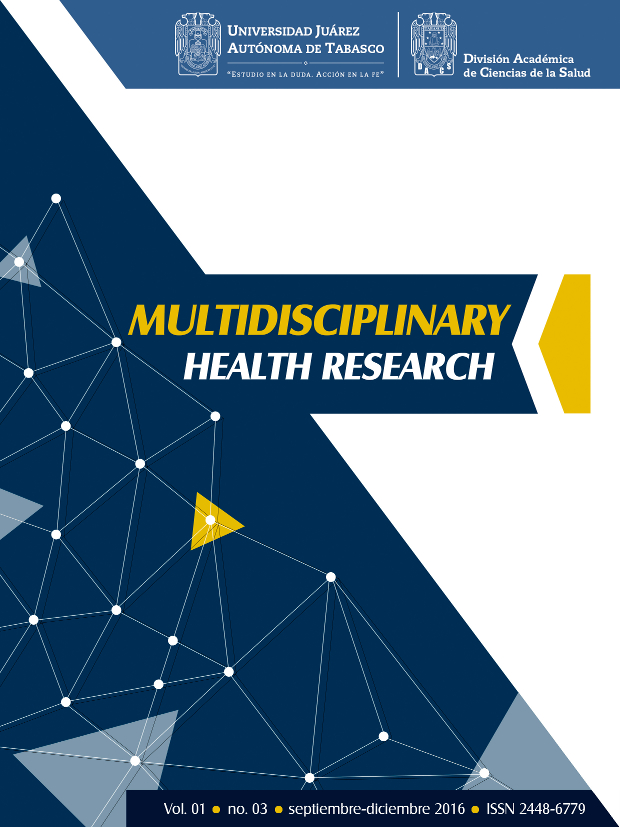Las doce teorías que fundamentan la combinación y la unificación de la Psicoterapia
DOI:
https://doi.org/10.19136/mhr.a1n3.1676Palabras clave:
Complejidad, Transdisciplinaridad, Caos, Atractor, Eclecticismo, Singularidad, bifurcación, diversidad, organización.Resumen
Se construye el fundamento teórico necesario para la unificación de la psicoterapia a través de la conjunción de doce teorías pertenecientes a las Ciencias de la Complejidad. Específicamente se expone la manera en cómo se entretejen las teorías cognitiva, de la red epistemológica, de las nuevas lógicas, de la singularidad, de la bifurcación, de los atractores, de las catástrofes, de la fractalidad, del caos, del eclecticismo, de la transdisciplinaridad, de la diversidad, de la organización y de la complejidad. Al final se discute cómo todas ellas se expresan en el acto de la psicoterapia.
The necessary theorical basement to unify the Psychotherapy is built though the joint of twelve theories which belong to the Complexity Sciences. It is shown the specific way of how are woven the following theories: cognitive, epistemological, the new logics, the singularity, bifurcation, atractors, catastrophes, chaos, eclecticism, transdisciplinarity, diversity, organization and complexity. How all of them are expressed in the act of psychotherapy is discussed.
Referencias
Arnold, V. I. (1981). Singularity Theory. Selected papers. Cambridge: Cambridge University Press.
Arnold, V. I. (1987), Teoría de las Catástrofes. España. Alianza Editorial
Beitman, B. y Yue, D. (2004). Psicoterapia: programa de formación. N.Y.: Mason.
Beutler, L. E. & Harwood, T. M. (2000). Prescriptive Psychotherapy: A practical guide to systematic treatment selection. New York: Oxford University Press.
Briggs, J. y Peat, F. D. (1999), Las siete leyes del caos. Barcelona: Revelaciones
Brooks-Harris, J. E. (2008) Integrative Multitheorical Psychotherapy. New York: Houghton Mifflin.
Campbell, A. B. (1993). Applied chaos theory. USA: Academic Press.
Chamberlain L. & Bütz, M. R. Edit.(1988). Clinical Chaos: a therapist´s guide to Nonlinear dynamics and therapeutic change. USA: Brunner-Mazel.
Ferrater, M. J. (1969). Diccionario de Filosofía. Argentina: Sudamericana. Barcelona: Paidós
Freeman, K. (1946). The pre-socratic philosophers. Great Britain: Basil Blackwell.
Gleick, J. (2008) Chaos: Making a New Science. New York: Penguin Books.
Hofstadter, R. D. (2001). Gödel, Escher, Bach; un eterno y grácil bucle. México, Tusquets & CONACYT.
Karasu, T. B. (1979). Toward unification of psychotherapies; a complementary model. The American Journal of Psychotherapy. 33: 555-563.
Kellert, S. H. (1994). In the wake of chaos; unpredictable order in dynamical systems. USA: The University of Chicago Press.
Klein, J. T. (1996). Crossing Boundaries; knowledge, disciplinarities and interdisciplinarities. London: University Press of Virginia.
Klein, J. T. (2001). Transdisciplinarity, joint problem solving among science, technology, and society; an effective way for managing complexity. Alemania: Birkhauser Verlag.
Koiter, W. T. (1976) "Current trends in the theory of buckling", Buckling of Structures. Proceedings of the IUTAM Symposium at Cambridge, pp. 1-16. Springer-Verlag, Berlín.
López, S. J. F. (2012). Las tendencias integrativas en psicoterapia. Tesis de Maestría, Universidad de las Américas, México.
Mandelbrot, B. B. (1989). Introduction to the fractal geometry of nature. New York. Rietman.
McCown, W., Keiser, R. & Roden A. (1988). Cognitive psychology and chaos. En Chamberlain, L. & Bütz, M. R. (Edit.) Clinical Chaos: a therapist´s guide to Nonlinear dynamics and therapeutic change. USA: Brunner-Mazel.
Morin, E. (1999). El método; el conocimiento del conocimiento. Vol. III Madrid: Cátedra
Morin, E. (1999b). Los siete saberes necesarios para la educación del futuro. París: UNESCO.
Morin, E. (2000). Introducción al pensamiento complejo. España: Gedisa.
Morin, E. (2004). Sobre la interdisciplinaridad. Boletín #2 del Centre International des Recherches et Etudes Transdisciplinaires. En Transdisciplina Creativa. Cecilia Suárez. Ed. 2002-2004. http://transdisciplina.tripoid.com
Morin, E. (2007). Complejidad restringida y complejidad generalizada o las complejidades de la Complejidad. Revista Internacional de Filosofía Iberoamericana y Teoría Social Venezuela: Universidad de Zulia. 38:107-119.
Nicolescu, B. (1994). La transdisciplinaridad; desvíos y extravíos. Turbulence #1.
Nicolescu, B. (2002). Manifesto of Transdisciplinarity. USA: State University of New York Press.
Nicolescu, B. (2008). Transdisciplinarity; theory and practice. USA: Hampton Press.
Norcross, J. (1987). Casebook of eclectic psychotherapy. Ed., USA: Brunner/Mazel.
Norcross, J. (1986). Handbook of eclectic psychotherapy. USA: Brunner/Mazel.
Norcross, J. (1990). Commentary: Eclecticism misrepresented and integration misunderstood. Psychotherapy, 30: 402-403.
Olivas, V. (2001). La lógica borrosa y sus aplicaciones. Pag. Web arantxa.ii.uam.es/dcamacho/lógica/recursos/fuzzy-into-esp.pdf
Page, S. E. (2011). Diversity and complexity. USA: Princeton University Press.
Peat, D. F. (1989). Sincronicidad; puente entre mente y materia. Barcelona: Kairós.
Piaget, J. (1990). El nacimiento de la inteligencia. México. Grijalbo.
Prigogine, I. (1999), Las leyes del caos. Barcelona: Crítica
Rescher, N. (1985). Sistematización cognoscitiva. México: Siglo XXI.
Rescher, N. (1995). Lucha de los sistemas; un ensayo sobre los fundamentos e implicaciones de la diversidad filosófica. México: UNAM.
Robertson, M. H. (1995). Psychotherapy education and training. EUA: International Universities Press.
Rescher, N. (1998). Complexity. USA: Transaction Publisher.
Saltzman, N. & Norcross, J. C. (1990). Therapy Wars; Contention and Convergence in Differing clinical Approaches. USA: Josey-Bass
Thom, R (1987). Estabilidad estructural y morfogénesis; Ensayo de una teoría general de los modelos. España: Gedisa.
Wachtel, P. L., Kruck, J. C. & Mckinney, M. K. (2005).Cyclical psychodynamics and integrative, relational Psychotherapy. En Norcross J. C. & Goldfried, M. R. Edit. Handbook of Psychotherapy Integration. New York: Oxford University Press.
Woodcock, A. y Davis, M. (1989). Teoría de las catástrofes. España. Cátedra.


